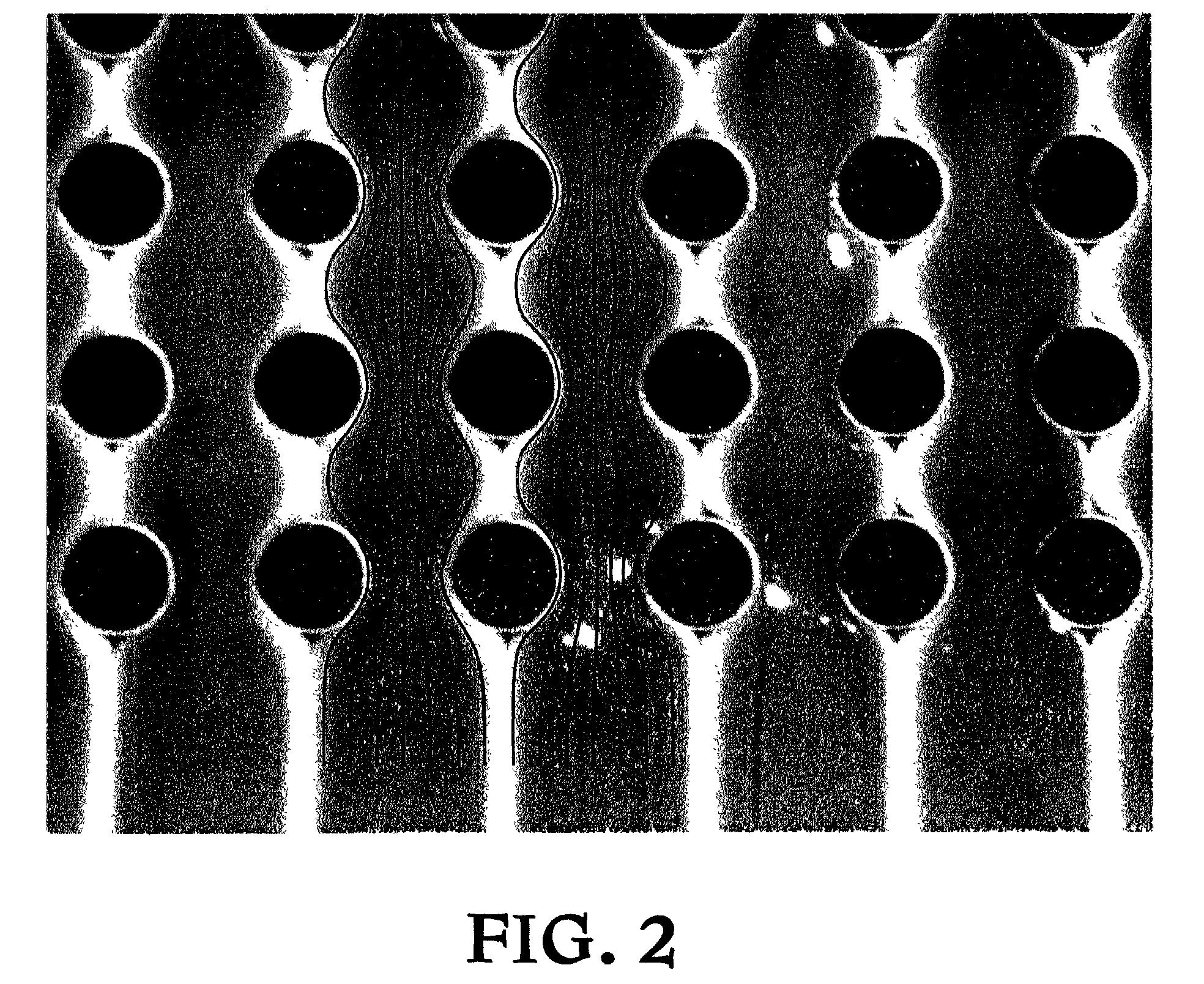Dielectrophoretic systems without embedded electrodes
- Summary
- Abstract
- Description
- Claims
- Application Information
AI Technical Summary
Benefits of technology
Problems solved by technology
Method used
Image
Examples
Embodiment Construction
[0020]The present invention is directed to the use of a plurality of insulating structures arranged within a flow channel of a device for dielectrophoretic separation of particles, wherein the arrangement can be uniform or nonuniform. These insulating structures provide the non-uniform electric field required for the dielectrophoretic separations and replace the embedded electrode structures of conventional devices.
[0021]Hereinafter, and throughout the written description of the invention the terms “dielectrophoretic” and “dielectrophoresis” will be abbreviated as DEP, for convenience. The term “particle” is understood to stand for biological as well as non-biological matter generally that can be in the size range of from about 5 nm to 200 μm, such as proteins, DNA, RNA, assemblages of molecules, viruses, plasmids, bacteria, cells or assemblages of cells, protozoans, embryos, or other small organisms, minerals, crystals, colloids, and gas bubbles. The term “spatial separation” is us...
PUM
| Property | Measurement | Unit |
|---|---|---|
| Pressure | aaaaa | aaaaa |
| Flow rate | aaaaa | aaaaa |
| Shape | aaaaa | aaaaa |
Abstract
Description
Claims
Application Information
 Login to View More
Login to View More - R&D
- Intellectual Property
- Life Sciences
- Materials
- Tech Scout
- Unparalleled Data Quality
- Higher Quality Content
- 60% Fewer Hallucinations
Browse by: Latest US Patents, China's latest patents, Technical Efficacy Thesaurus, Application Domain, Technology Topic, Popular Technical Reports.
© 2025 PatSnap. All rights reserved.Legal|Privacy policy|Modern Slavery Act Transparency Statement|Sitemap|About US| Contact US: help@patsnap.com



